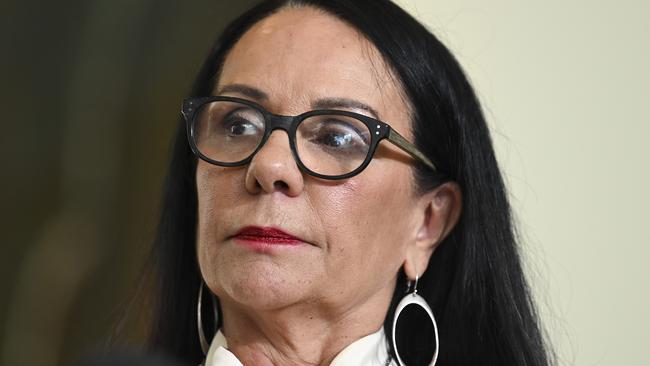Albanese commits $4bn to remote indigenous communities
Anthony Albanese aims to provide new homes for 10,000 people in remote indigenous communities under an investment with the NT government.

Anthony Albanese will unveil $4bn for housing in remote communities across the Northern Territory under the biggest announcement for Indigenous Australians since the failure of the voice referendum in October, with Labor aiming to build 2700 homes over the decade.
The Prime Minister will on Tuesday travel to the community of Binjari, near Katherine, in the Northern Territory where he will commit the government to delivering 270 new homes a year in a bid to reduce overcrowding by 50 per cent.
About 92,000 Aboriginal Australians live in locations classified as “very remote”. The announcement on Tuesday is being framed by NT Chief Minister Eva Lawler as providing new homes for more than 10,000 people.
“The years to come will provide homes for remote-area residents that are safer and more secure, as well as employment and training opportunities for those who live in our communities and homelands,” Ms Lawler said. “This is a game changer for the Territory.”
Mr Albanese has reframed his Indigenous affairs agenda following the defeat of the voice to parliament to focus more strongly on practical issues such as jobs, education, housing and justice.
Handing down the annual Closing the Gap report in February, which revealed only four out of 19 goals were on track to be met and four were going backwards, Mr Albanese said the government needed to find better ways to improve the lives of Aboriginal and Torres Strait Islander people.
He told parliament the government would “take the time needed” to establish a truth-telling body, in comments interpreted by Indigenous leaders as a delay in establishing the Makarrata Commission – despite Mr Albanese saying on election night he would implement the Uluru Statement in full.
The Uluru Statement comprises an Indigenous voice, treaty and truth telling.
In the wake of the referendum defeat, in which 60 per cent of Australians voted against a voice to parliament, the Coalition has pressured the government to be more specific about its plans to provide practical support for Indigenous Australians and create jobs. Opposition spokeswoman for Indigenous Australians Jacinta Price challenged the government to bring Aboriginals and Torres Strait Islanders “into the fabric of this nation”, warning that failure on this score would elevate indigenous policy as a battleground issue at the next election.
Mr Albanese said on Monday the government was “committed to practical actions that improve the lives of First Nations people” and argued that better housing in remote communities would help close the gap between Indigenous and non-Indigenous Australians.
The government will argue the $4bn investment into remote communities over the next decade will create employment opportunities and develop skills to build and manage housing.
Ms Lawler said the investment would go “straight into the hands of our remote communities and Territory businesses.”

Indigenous Australians Minister Linda Burney said the funding would “make a difference to the lives of so many Aboriginal people living in remote communities”.
“Increasing housing supply will ease overcrowding, which we know is a major barrier to closing the gap,” Ms Burney said.
The $4bn investment will be delivered jointly by the commonwealth, which will provide $2.1bn over the decade, and the Northern Territory government, which will provide the remaining $1.9bn.
A new partnership agreement will be established between both governments, Aboriginal Housing NT and Aboriginal land councils.
The commonwealth’s share of the funding involves $843.8m in new spending from the Albanese government, with the rest met through pre-existing commitments and reprioritisations.
“This landmark agreement between the commonwealth, Northern Territory government and Aboriginal Housing NT delivers a significant investment in remote housing in the NT over the next decade,” Mr Albanese said. “The Northern Territory has the highest level of overcrowding in the country which we are working to halve by building 270 houses each year.”
For remote housing arrangements, the Northern Territory government usually leases the land, which is owned by Aboriginal communities, and tenants pay about $70 per bedroom. Houses with more than four bedrooms are capped at $280 a week. Homes are allocated to families by the communities in accordance with local decision making strategies.
The commonwealth is also investing $120m over three years to match the NT’s investments for the delivery of housing improvements and infrastructure upgrades in remote homelands.
Homelands or outstations are remote areas where small populations of Aboriginal people live on lands where they have traditional ownership. There are about 500 homelands in the NT with a total of 2400 homes. In these areas, the land and homes are owned by Aboriginal people so no rent is paid to the government.
Marion Scrymgour, Labor MP for Lingiari in the NT, said community consultations, local decision-making and “community priorities” would be central to delivering the new homes.
The government said the delivery of housing across remote NT communities had accelerated in recent years, with commonwealth-funded delivery increasing by more than 200 per cent between 2021-22 and 2022-23.








To join the conversation, please log in. Don't have an account? Register
Join the conversation, you are commenting as Logout